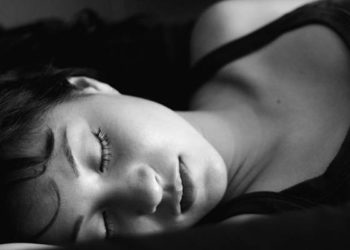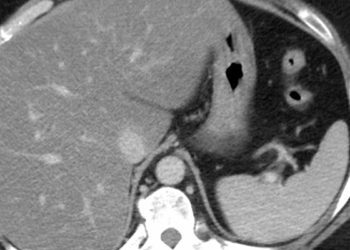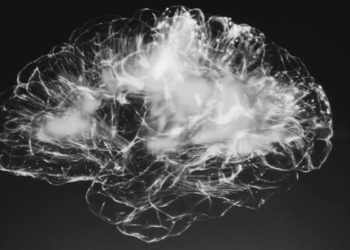Wellness Check: Sleep
2 Minute Medicine is pleased to announce that we are launching Wellness Check, a new series dedicated to exploring new research evidence focused on wellness. Each week, we will report on articles examining different aspects of wellness, including (but not limited to) nutrition, sleep, reproductive health, substance use and mental health. This week, we explore the latest evidence-based updates in sleep.
1. In this study, astronauts reported on average sleeping for 6.5 hours in flight.
2. Furthermore, sleep duration of less than 6 hours led to greater reductions in psychomotor response speed, elevated stress, mental fatigue, physical exhaustion, and higher workload in astronauts during flight.
Evidence Rating Level: 2 (Good)
Astronauts need to maintain optimal levels of neurobehavioral functioning for successful spaceflight missions. Adequate sleep quality and duration are critical, but astronauts typically experience short sleep durations (<6 h) in space. This longitudinal study investigated the sleep-wake behaviors, neurobehavioral functions, and ratings of stress and workload amongst astronauts on the International Space Station (ISS).
Twenty–four astronauts (19 males, 5 females) from multiple international space agencies who were scheduled for 6-month ISS missions from 2009 to 2014 were included. The Reaction SelfTest (RST) was utilized to assess 1) sleep timing, quality, and duration; 2) neurobehavioral performance (PVT-B) on the astronauts before, during, and after spaceflight, and 3) visual analog scale (VAS) ratings of behavioral states. Astronauts reported on the time to bed and out of bed, along with the time taken to fall asleep, time spent awake due to sleep disturbances, and time spent in bed after awakening. Data collection began 180 days before launch, continued every 4 days in-flight aboard the ISS, and up to 90 days post-landing.
Overall, astronauts reported sleeping approximately 6.5 h in-flight. Sleep durations <6 h correlated with greater reductions in psychomotor response speed, higher workload, and elevated stress compared to astronauts who received 7-8 h of sleep. Moreover, sleep durations <5 h led to more negative somatic behavioral states, such as greater physical exhaustion ratings, mental fatigue, and tiredness. However, this study was limited in that it relied on self-reported sleep-wake behaviors from astronauts. Nonetheless, this study was significant as it was the largest study to date of astronaut sleep and neurobehavioral functions during spaceflight missions, demonstrating an association between inadequate sleep and impairments in attention and behavioral functions.
Light exposure during sleep may alter glucose metabolism and impair cardiometabolic function
1. In this study, one night of moderate light exposure (100 lx) during sleep was associated with increased sympathetic nervous system activation, and in turn, increased next-morning insulin resistance, compared to sleep in a dimly lit environment (< 3 lx).
2. The positive correlation between higher sympathovagal balance and insulin levels suggest that sympathetic activation may play a role in the light-induced changes observed in this study.
Evidence Rating Level: 2 (Good)
Previous research implicates nighttime light exposure as a risk factor for cardiometabolic disease. However, the mechanism behind this association is unclear. This study aimed to investigate the effects of acute light exposure during nighttime sleep on glucose homeostasis. Furthermore, this study aimed to further elucidate whether this relationship was due to melatonin suppression, sympathetic nervous system (SNS) activation during sleep, or reduced sleep quality.
Twenty healthy adults aged 18-40 years old, with habitual sleep duration (6.5 – 8.5 hours) and sleep onset (between 9 PM – 1 AM) were included from Chicago, Illinois, United States. Several exclusion criteria were listed in the study, including participants with sleep disorders, neurocognitive disorders, psychiatric disorders, and obesity. Participants were subsequently randomized into a room light condition (n=10, one night in dim light at < 3 lx, followed by one night with room light at 100 lx) or a dim light room condition (n=10, two consecutive nights in dim light < 3 lx). Glucose and insulin levels were measured. Additionally, various elements were also studied, including sleep microstructure and macrostructure, blood pressure, heart rate (HR), and heart rate variability (HRV).
In this study, insulin resistance levels were higher amongst participants in the room light condition; furthermore, these participants also spent significantly more time in stage N2 of sleep and less time in slow-wave and rapid eye movement during sleep. Higher average HR and lower HRV during sleep were also observed in participants randomized to room light, suggestive of increase SNS activation. In addition, lower HRV (ie. increased SNS activation) was correlated with higher insulin resistance. However, this study was limited by its small sample size, thereby limiting generalizability of results. Nonetheless, this study was significant in suggesting that room light exposure during sleep may impair glucose homeostasis through increased SNS activation.
Childhood insomnia symptoms may persistent into adulthood
1. This study found that pre-existing sleep patterns amongst children tend to persist into adolescence and adulthood.
2. Furthermore, insomnia symptoms may worsen into adulthood insomnia among short-sleeping children and adolescents.
Evidence Rating Level: 2 (Good)
Insomnia symptoms have detrimental effects on mental and physical health. However, little is known about the duration and progression of insomnia symptoms from childhood. This 15-year longitudinal study investigated the developmental trajectories of insomnia symptoms in children as they enter adulthood, as well as their evolution into adult insomnia.
In this study, 502 school-aged child (median 9 years old) participants were included from the larger Penn State Child Cohort study. After baseline data collection, participants were subsequently studied as adolescents (median 16 years old) and as adults (median 24 years old). Study outcomes assessed for insomnia symptoms (defined as difficulty initiating and/or maintaining sleep) via parent or self-reports at all 3 time points. Additionally, adult insomnia was reported via self-report in young adulthood, as well as objective sleep duration in childhood and adolescence (via polysomnography).
Study results showed that amongst children with insomnia symptoms, the most typical trajectory was persistence (continuation of symptoms into adulthood), followed by remission, and a waxing-and-waning pattern. Among children with normal sleep, persistence was most common, followed by developing insomnia symptoms, and a waxing-and-waning pattern. Interestingly, the results suggest the odds of insomnia symptoms worsening into adulthood insomnia were 2.6-fold amongst children with short sleep duration and 5.5-folds amongst adolescents with short sleep duration. However, this study was limited by the fact that measurements were gathered from one night of sleep and thus may not be representative of habitual sleep at home. Nonetheless, this study was significant in suggesting that early sleep interventions are a health priority, and pediatricians should not expect insomnia symptoms to remit in many pediatric children.
1. Certain sleep phenotypes, such as those with the familial natural short sleepers (FNSS) mutation, anecdotally do not exhibit the neurocognitive changes of Alzheimer’s Disease.
2. In this study, the FNSS mutation, which is possibly associated with more efficient sleep, was found to impede tau and amyloid plaque build-up in Alzheimer’s Disease mouse models.
Evidence Rating Level: 2 (Good)
Sleep deprivation and dysregulation are known to contribute to the progression of Alzheimer’s Disease (AD). Certain sleep phenotypes, such as Familial Natural Short Sleepers (FNSS), confer individuals to sleep fewer hours at night, and many are within an age range when AD would commonly develop. However, anecdotally these individuals do not exhibit the neurocognitive changes associated with AD, possibly due to increased sleep efficiency. As such, this study investigated the impact of 2 FNSS mutations (DEC2 and Npsr1) on the development of amyloid beta (AB) and tau pathology in AD-like mouse models.
In this study, FNSS mice models (DEC2 and Npsr1) were first cross bred with commonly used AD models (PS19 and 5XFAD APP) which exhibited AB and tau pathologies. Wild-type mice were also cross bred with the FNSS mice models and AD models to create control groups. Subsequently, various immunohistological analyses were performed on the cortical and hippocampal regions of cross-bred mice to assess for the development of AB and tau pathology over time.
Study results demonstrated that in the PS19-mouse model carrying both FNSS mutations, the development of tau pathology was reduced in the hippocampal region compared to control mice. Furthermore, in the 5XFAD APP-mouse model carrying both FNSS mutations, the development of AB pathology was reduced in the cortex and hippocampus compared to control mice. However, this study was limited in that the study was performed using select mice models, from more than 100 genetically different mouse lines, limiting generalizability of results. Nonetheless, this study was significant in suggesting that efficient sleep may be a therapeutic target for halting the progression of AD.
Image: PD
©2022 2 Minute Medicine, Inc. All rights reserved. No works may be reproduced without expressed written consent from 2 Minute Medicine, Inc. Inquire about licensing here. No article should be construed as medical advice and is not intended as such by the authors or by 2 Minute Medicine, Inc.







